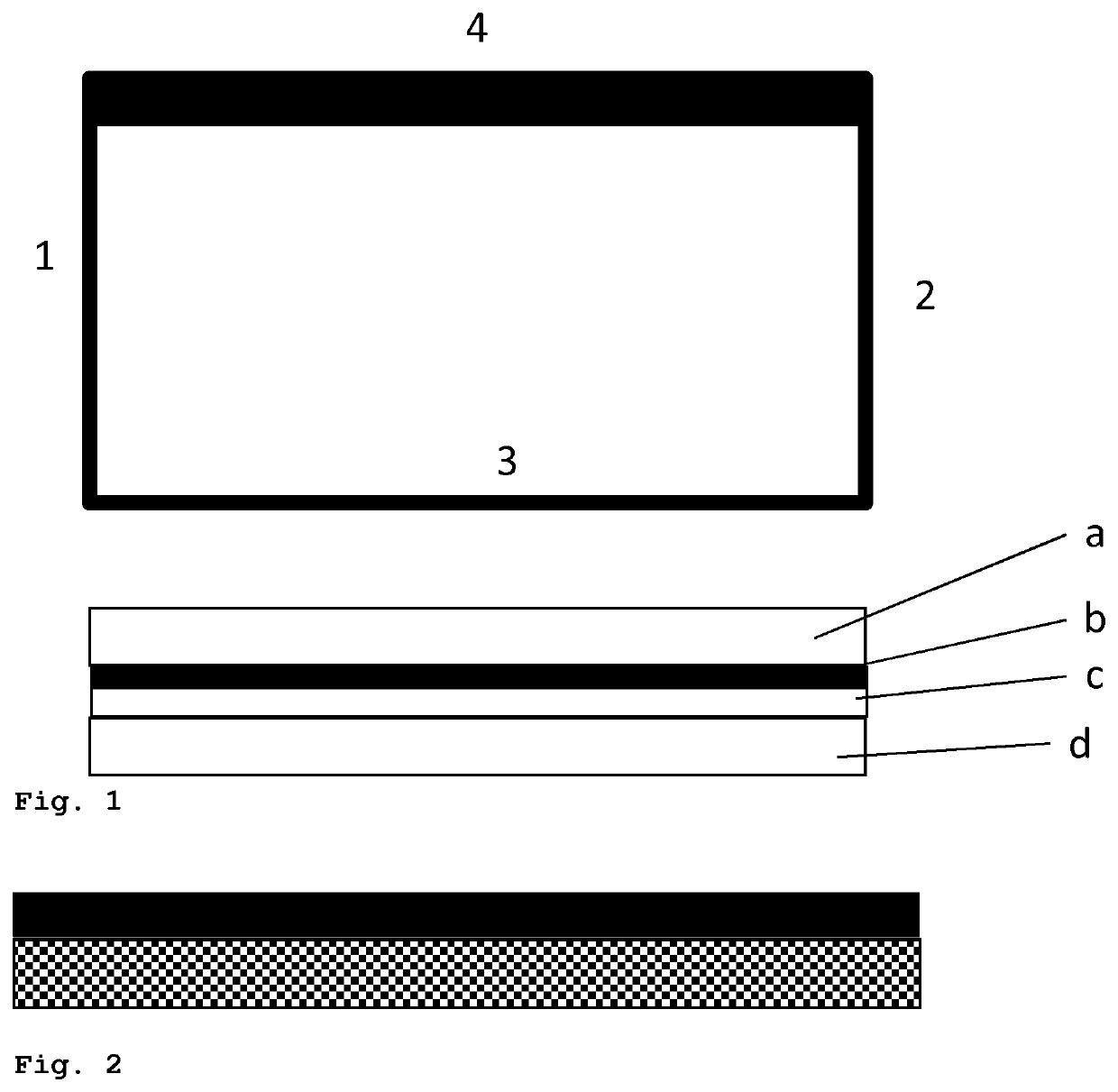Laminated glass comprising interlayer film layers with a pigmented frame
a technology of interlayer film layers and pigmented frames, applied in the field of laminated glass, can solve the problems of blurring of the print, increasing the breakage rate of thin glass sheets, and complicating even bending
- Summary
- Abstract
- Description
- Claims
- Application Information
AI Technical Summary
Benefits of technology
Problems solved by technology
Method used
Image
Examples
example 1
[0096]The printing was achieved by digital ink-jet printing with commercially available ink-jet inks e.g. SentryGlas® Expressions™ (alcohol solvent based). To prevent attacking of the ink with the Mowital LP BF 6-050, the color strength of a single printing step was chosen so that a translucent film was achieved. The necessary opaqueness was achieved by over-printing the already printed parts and subsequent drying of the film at 22° C. before applying the next layer of printing ink.
example 2
[0097]Printing was achieved by using a water-based printing ink that is suitable for flexographic printing, based on polyurethane as binder and carbon black as pigment. Such printing inks are commercially available e.g. from Siegwerk Druckfarben AG&Co. KGaA, Siegburg. Since the water-based ink does not attack the Mowital LP BF 6-050, the necessary opaqueness was achieved in one printing step. After drying, the water content of film A in the printed region was measured to be 2%.
[0098]As film B, commercial automotive grade PVB film with reduced adhesion (TROSIFOL® VG R10 0.76 from Kuraray Europe GmbH) was used.
[0099]Laminates comprising printed films A obtained as described exhibited a nicely defined edge between the clear and the opaque black part. No blurring or deformation of the printed area could be observed. Opacity was measured to be clearly below 5% visible light transmission.
[0100]Furthermore, the laminates were subject to a heat soak test at 100° C. during 7 days. Neither th...
example 3 and 4
[0101]The above disclosed examples were repeated using one sheet of green glass having a thickness of 2.1 mm and one sheet lightweight clear glass having a thickness of 0.7 mm. Similar to the results obtained by using 2×2.1 mm glass, the thus obtained laminated glasses showed no blurring of the pigmented region and an overall aspect close to the one obtained by using enamel printed black frame on one of the inner glass surfaces.
PUM
| Property | Measurement | Unit |
|---|---|---|
| width | aaaaa | aaaaa |
| thickness | aaaaa | aaaaa |
| temperatures | aaaaa | aaaaa |
Abstract
Description
Claims
Application Information
 Login to View More
Login to View More - R&D
- Intellectual Property
- Life Sciences
- Materials
- Tech Scout
- Unparalleled Data Quality
- Higher Quality Content
- 60% Fewer Hallucinations
Browse by: Latest US Patents, China's latest patents, Technical Efficacy Thesaurus, Application Domain, Technology Topic, Popular Technical Reports.
© 2025 PatSnap. All rights reserved.Legal|Privacy policy|Modern Slavery Act Transparency Statement|Sitemap|About US| Contact US: help@patsnap.com

